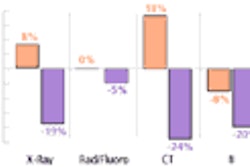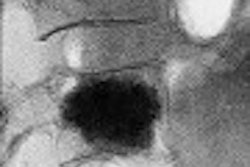Gold may be losing its luster as a much-sought-after metal, at least in some interventional radiology procedures such as uterine artery embolization (UAE). The findings of a report on the use of gold-colored gelatin microspheres in UAE suggest that there may be a link between complications of endometritis developed after the procedure and the use of gold in the embolization.
Although the report, which involved a small patient population, did not definitively conclude that gold is the cause for cases of non-infective endometritis in UAE procedures, it speculated that it might be the cause. The researchers, led by Dr. Howard Richard III, concluded that it would be better not to use gold-colored gelatin microspheres as an embolic agent until further research is done on potential complications.
Endometritis, or the inflammation of the inner lining of the uterus, is not commonly experienced by patients after UAE, with an incidence of just 0.5%. In this case, however, seven patients who underwent UAE with gold-colored gelatin microspheres developed non-infective endometritis, according to the study, published as a letter to the editor in the Journal of Vascular and Interventional Radiology (April 2004, Vol. 15:4, pp. 406-407).
Researchers from the University of Maryland in Baltimore and Albany Medical College in New York studied endometritis complications in patients who underwent UAE with gold-colored microspheres (EmboGold, Biosphere Medical, Rockland, MA). For the embolization, 500-micron microspheres were used with 700-900-micron and 900-1,200-micron spheres added on a case-to-case basis.
None of the patients had histories of smoking, pelvic infection, or vaginal discharge before UAE. Considering the lack of other contributing factors, gold was suspected as the reason for the atypical symptoms experienced by the UAE patients.
Hypersensitivity reactions to gold -- lymphomatoid eosinophilic reactions, for example -- have been described in previous papers (American Journal of Contact Dermatology, March 2001, Vol. 12, pp. 3-5; Contact Dermatitis, April 1999, Vol. 40:4, pp. 216-7).
A hysterectomy specimen from one of their patients confirmed a hypersensitivity reaction, Richard's group wrote.
Second, gold-coated stents have been associated with increased risk of restenosis, and with increased stimulation of neutrophils, monocytes, and platelets, the authors wrote. From these findings, the study concludes that the addition of gold may result in significant inflammatory risk for some patients, potentially explaining the endometritis seen in the patients after UAE.
The authors said they had discontinued their use of the gold-colored microspheres, and recommended further study of the issue in order to help physicians choose embolic agents and help counsel patients on the risks of UAE with the microspheres.
Risk of restenosis
In related research, a 2000 study by Dr. Adnan Kastrati and colleagues at Technischen Universitat in Munich found that patients with gold-coated stents have a higher risk of restenosis in the 12-month period after stenting, according to a randomized trial of 731 patients that compared gold-coated stents with uncoated steel stents (Circulation, May 30, 2000, Vol. 101:21, pp. 2478-83).
The trial was conducted using stents of identical design except for the presence or absence of a gold coating. The researchers noted with concern that the restenosis rate was high for the gold-stent group, though the influence on thrombotic events in the first 30 days was insignificant.
However, another study done on gold coating and restenosis after primary stenting of ostial renal artery stenosis (RAS) argued that gold coating is not a significant predictor of restenosis. The four-year study concluded that the restenosis rate after stent angioplasty of ostial RAS is influenced by the vessel diameter, and not by the stent's gold coating (Catheterization and Cardiovascular Interventions, September 2003, Vol.60:1, pp. 1-6; discussion 7-8).
The findings of these studies are relevant because gold-coated stents are preferred for their better visibility and ease of deployment in interventional cardiology. Experimental studies in canines have shown that gold-coated stents display superior trackability and radiopacity, in addition to greater flexibility.
By N. ShivapriyaAuntMinnie.com staff writer
May 3, 2004
Related Reading
Uterine artery embolization does not compromise ovarian reserve: study, April 20, 2004
SIR study demonstrates UFE works well, offers speedy recovery, March 26, 2004
IR, ob/gyns square off in UAE performance debate, March 25, 2004
Ob/Gyn group advises against uterine artery embolization for certain women, February 4, 2004
Copyright © 2004 AuntMinnie.com



















